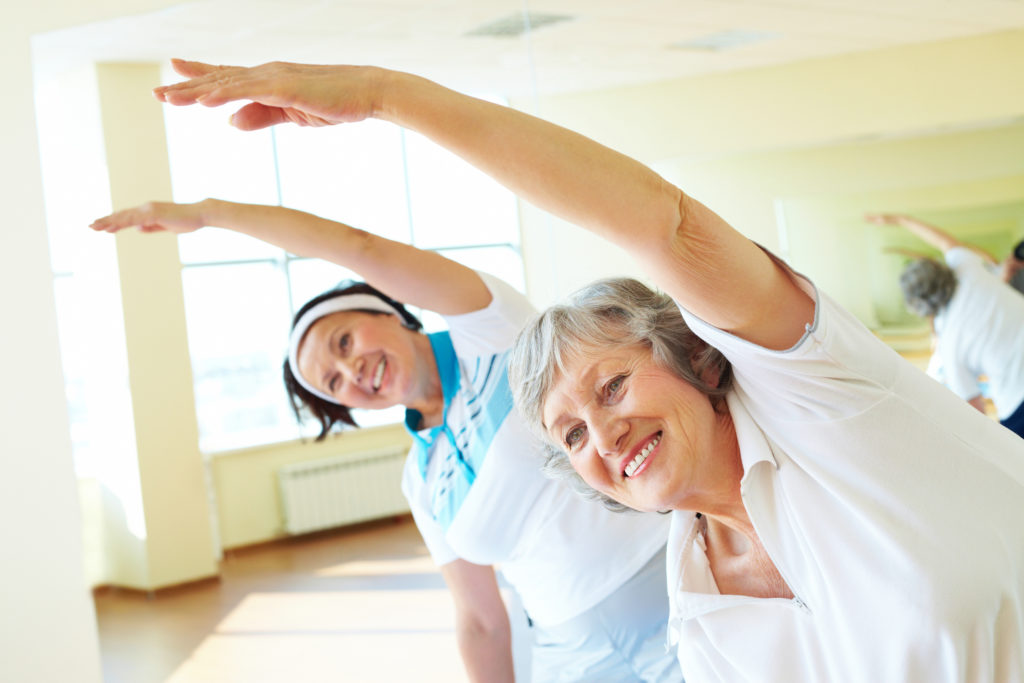Brittle bones and falling are two of the biggest hazards of getting older. Regular exercise can help lower both of these risks – along with keeping your body trim and your joints fluid. Regular exercise can even help reduce the risk of cognitive decline.

Walking and Rolling Along
Many people love exercise and working out. If you’re not one of them, that doesn’t mean you should resign yourself to becoming a couch potato. A daily walk, preferably outside, but also on a treadmill, or inside your home or apartment building, is an excellent form of exercise. All you need are a comfortable pair of shoes.
Stiff joints represent another obstacle for many people to begin exercising. Low impact activities, such as bike riding and swimming, are ideal for getting your body moving, without the jarring impact of sports like tennis, basketball, or running.
Strong Muscles, Improved Balance
Muscle density decreases with every passing decade. One way to reverse the process is with resistance training. Lifting weights builds muscle mass that helps burn calories. You don’t have to lift hundreds of pounds to gain the benefit of weight training. Light weights or specialized resistance bands are sufficient. Resistance training also helps to maintain bone density – reducing the risk of osteoporosis. Finally, stronger bones and lean muscle mass also help improve balance and reduce the risk of falling.
Exercise as a Social Activity
When you think of exercise, do you envision pumping music and rows of sweaty bodies clad in spandex? While a gym workout can provide a strenuous workout, it’s not necessary to subject yourself to a grueling solo routine. A leisurely bike ride with your significant other, or a gentle jog with a friend, can help prevent loneliness and depression while keeping your body moving.
Keep Moving!
The take-home lesson is that there is no one “right” way to exercise. The best exercise for you is the one you’ll actually do. So choose an activity you enjoy and get moving! It’s one of the best remedies for aging well.




